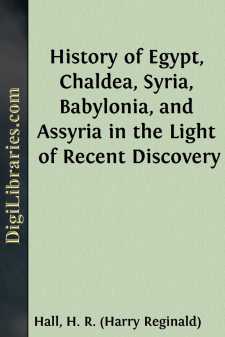Categories
- Antiques & Collectibles 13
- Architecture 36
- Art 48
- Bibles 22
- Biography & Autobiography 813
- Body, Mind & Spirit 142
- Business & Economics 28
- Children's Books 15
- Children's Fiction 12
- Computers 4
- Cooking 94
- Crafts & Hobbies 4
- Drama 346
- Education 46
- Family & Relationships 57
- Fiction 11829
- Games 19
- Gardening 17
- Health & Fitness 34
- History 1377
- House & Home 1
- Humor 147
- Juvenile Fiction 1873
- Juvenile Nonfiction 202
- Language Arts & Disciplines 88
- Law 16
- Literary Collections 686
- Literary Criticism 179
- Mathematics 13
- Medical 41
- Music 40
- Nature 179
- Non-Classifiable 1768
- Performing Arts 7
- Periodicals 1453
- Philosophy 64
- Photography 2
- Poetry 896
- Political Science 203
- Psychology 42
- Reference 154
- Religion 513
- Science 126
- Self-Help 84
- Social Science 81
- Sports & Recreation 34
- Study Aids 3
- Technology & Engineering 59
- Transportation 23
- Travel 463
- True Crime 29
History of the Decline and Fall of the Roman Empire - Volume 5
by: Edward Gibbon
Categories:
Description:
Excerpt
Chapter XLIX: Conquest Of Italy By The Franks.—Part I.
Introduction, Worship, And Persecution Of Images.—Revolt Of
Italy And Rome.—Temporal Dominion Of The Popes.—Conquest
Of Italy By The Franks.—Establishment Of Images.—Character
And Coronation Of Charlemagne.—Restoration And Decay Of The
Roman Empire In The West.—Independence Of Italy.—
Constitution Of The Germanic Body.
In the connection of the church and state, I have considered the former as subservient only, and relative, to the latter; a salutary maxim, if in fact, as well as in narrative, it had ever been held sacred. The Oriental philosophy of the Gnostics, the dark abyss of predestination and grace, and the strange transformation of the Eucharist from the sign to the substance of Christ's body, I have purposely abandoned to the curiosity of speculative divines. But I have reviewed, with diligence and pleasure, the objects of ecclesiastical history, by which the decline and fall of the Roman empire were materially affected, the propagation of Christianity, the constitution of the Catholic church, the ruin of Paganism, and the sects that arose from the mysterious controversies concerning the Trinity and incarnation. At the head of this class, we may justly rank the worship of images, so fiercely disputed in the eighth and ninth centuries; since a question of popular superstition produced the revolt of Italy, the temporal power of the popes, and the restoration of the Roman empire in the West.
1 ()
[ The learned Selden has given the history of transubstantiation in a comprehensive and pithy sentence: "This opinion is only rhetoric turned into logic," (his Works, vol. iii. p. 2037, in his Table-Talk.)]
The primitive Christians were possessed with an unconquerable repugnance to the use and abuse of images; and this aversion may be ascribed to their descent from the Jews, and their enmity to the Greeks. The Mosaic law had severely proscribed all representations of the Deity; and that precept was firmly established in the principles and practice of the chosen people. The wit of the Christian apologists was pointed against the foolish idolaters, who bowed before the workmanship of their own hands; the images of brass and marble, which, had they been endowed with sense and motion, should have started rather from the pedestal to adore the creative powers of the artist. Perhaps some recent and imperfect converts of the Gnostic tribe might crown the statues of Christ and St. Paul with the profane honors which they paid to those of Aristotle and Pythagoras; but the public religion of the Catholics was uniformly simple and spiritual; and the first notice of the use of pictures is in the censure of the council of Illiberis, three hundred years after the Christian aera. Under the successors of Constantine, in the peace and luxury of the triumphant church, the more prudent bishops condescended to indulge a visible superstition, for the benefit of the multitude; and, after the ruin of Paganism, they were no longer restrained by the apprehension of an odious parallel....


















